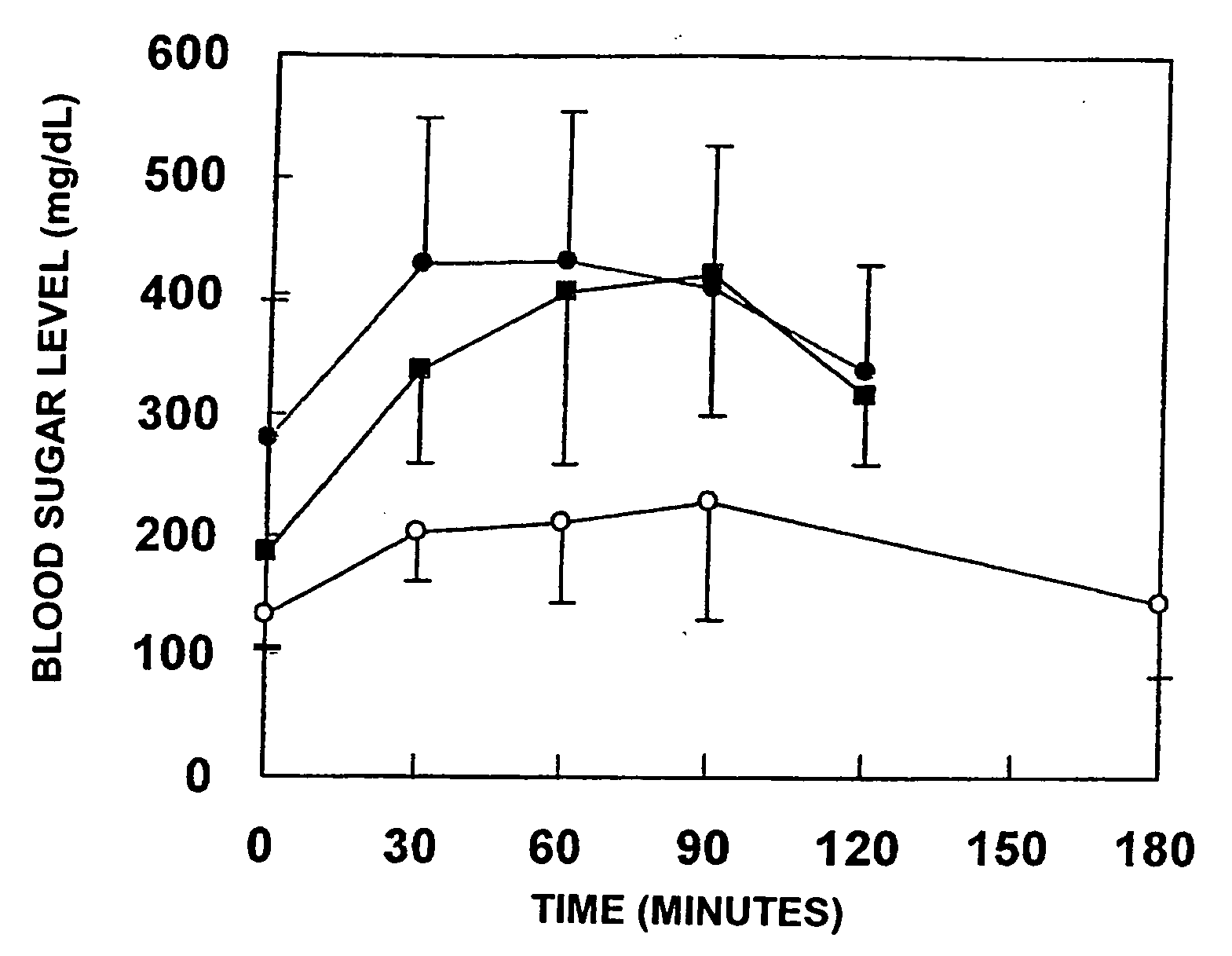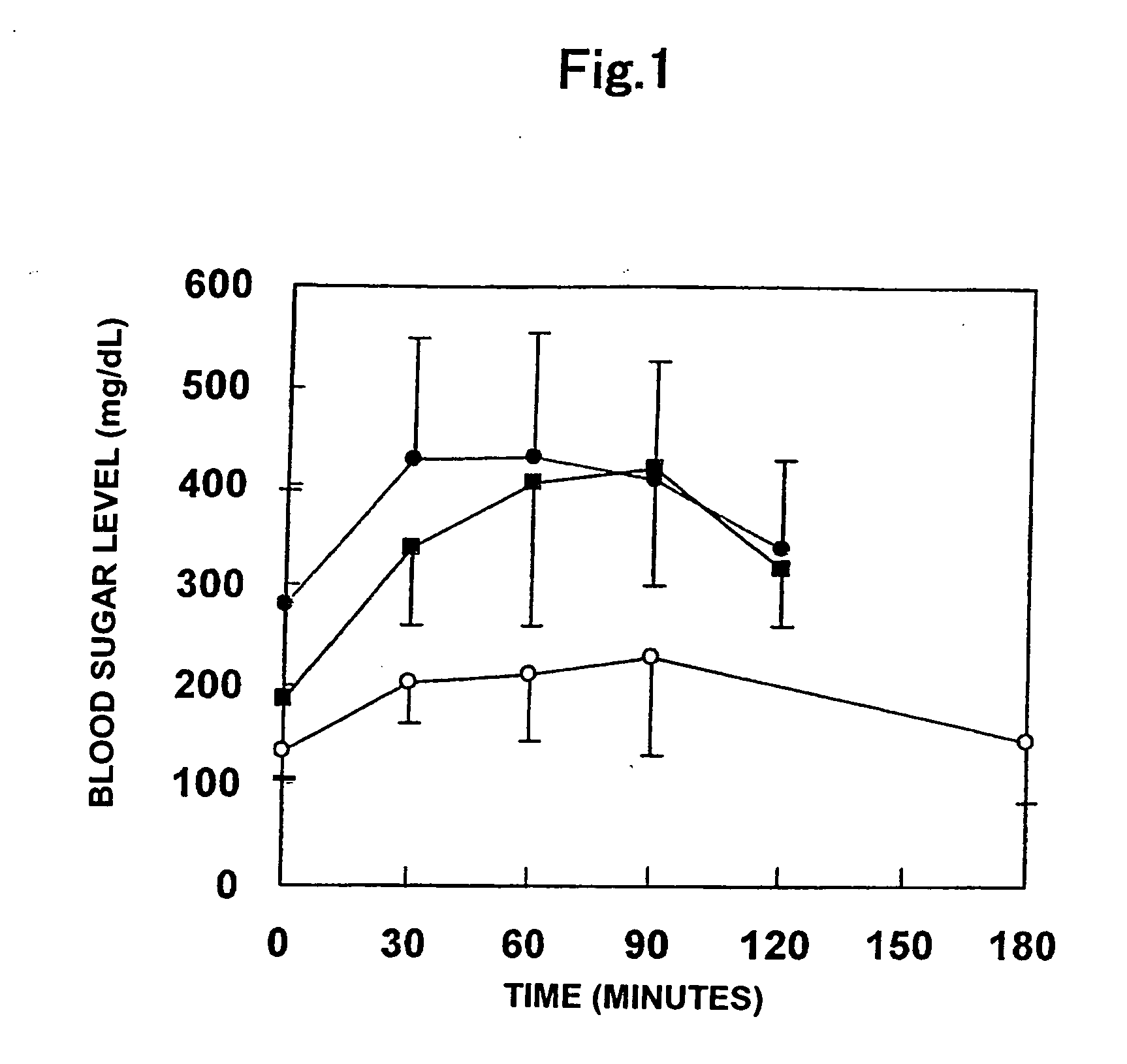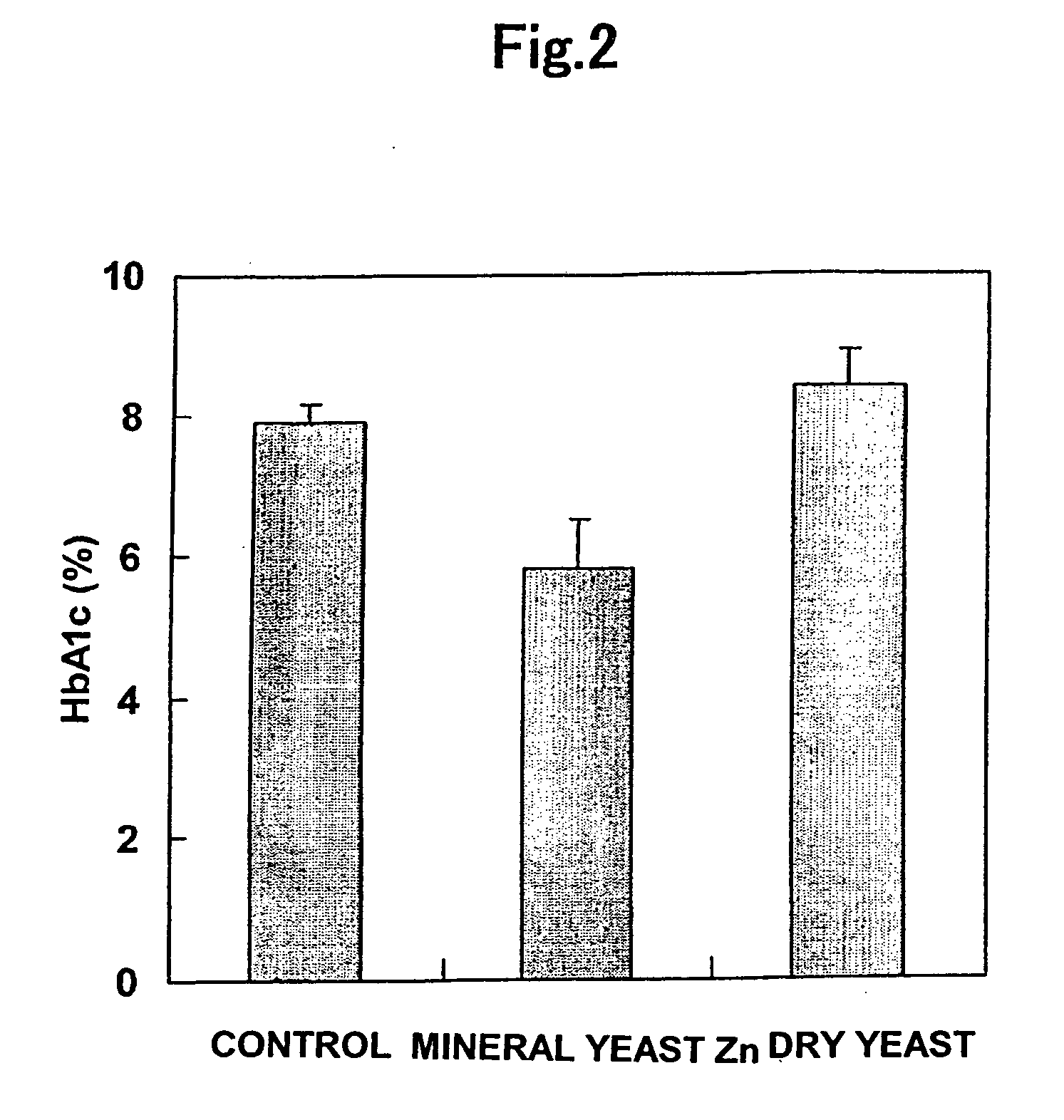Zinc-rich foods having effect of preventing diabetes
a technology of zinc-rich foods and diabetes, applied in the direction of drug composition, plant/algae/fungi/lichens, drug composition, etc., can solve the problems of undesirable combination of other foods that interfere with this effect, and achieve the effects of preventing lifestyle diseases, good stability, and reducing toxicity
- Summary
- Abstract
- Description
- Claims
- Application Information
AI Technical Summary
Benefits of technology
Problems solved by technology
Method used
Image
Examples
embodiment 1
[0021] Ordinary feed (shown by ●: control group), high Zn content yeast (e.g., mineral yeast-Zn) feed (shown by ∘) and baker's yeast (e.g., dry yeast) containing feed (shown by ▪) were administered for nine (9) weeks to KK-Ay mice (approximately four (4) weeks of age) constituting young type H diabetes model animals not yet showing the onset of type II diabetes; afterward, a glucose loading test (one (1) g glucose / kg of body weight) was performed. HbA1c was measured, and the mean ingestion amount during the administration period was investigated (FIGS. 1, 2 and 3).
[0022] As seen from Embodiment 1, the administration group receiving mineral yeast-Zn with a high zinc content showed a clear ameliorating effect in the glucose loading test compared to the control and the administration group receiving only dry yeast. Furthermore, although the ingestion amount showed no change, the HbA1c value also showed an improvement only in the high zinc content mineral yeast-Zn administration group....
embodiment 2
[0023] In Embodiment 2, KK-Ay mice were purchased at four (4) weeks of age and were allowed to freely ingest ordinary feed, feed prepared by adding papaya with a high zinc content (Zn / papaya) to ordinary feed, or feed prepared by adding papaya (papaya) to ordinary feed until the animals reached eleven (11) weeks of age. The variation in the body weight and variation in blood glucose levels were measured (FIGS. 4 and 5).
[0024] At ten (10) weeks of age, the HbA1c values were measured, and a glucose loading test two (2) g glucose / kg of body weight) was performed using a modified version of the method described in Non-patent Reference 3 (FIGS. 6 and 7).
[0025] Non-patent Reference 3: Y. Yoshikawa et al., J. Biol. Inorg. Chem., 7, 68-73 (2002).
[0026] As shown in FIG. 4, the group ingesting the Zn / papaya containing feed showed a suppression of the increase in body weight compared to the groups ingesting the other feeds. Since no significant variation in the amount of feed ingested was o...
PUM
 Login to View More
Login to View More Abstract
Description
Claims
Application Information
 Login to View More
Login to View More - R&D
- Intellectual Property
- Life Sciences
- Materials
- Tech Scout
- Unparalleled Data Quality
- Higher Quality Content
- 60% Fewer Hallucinations
Browse by: Latest US Patents, China's latest patents, Technical Efficacy Thesaurus, Application Domain, Technology Topic, Popular Technical Reports.
© 2025 PatSnap. All rights reserved.Legal|Privacy policy|Modern Slavery Act Transparency Statement|Sitemap|About US| Contact US: help@patsnap.com



